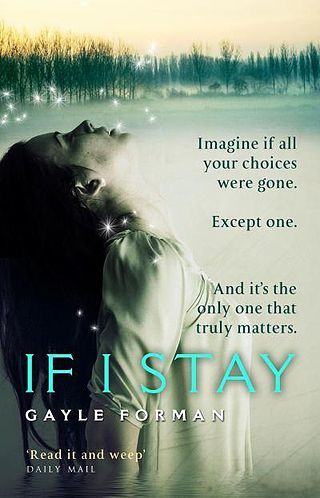If I Stay by Gayle Foreman is a young adult novel published 2009. This book is beautifully plotted, and makes an excellent case study if writers are planning a story with an ‘alternating’ plot.
WELCOME TO THE THIRD GOLDEN AGE
This book is an excellent example of ‘The Third Golden Age Of Children’s Literature’, as described by Amanda Craig:
The emphasis in the First Golden Age [of children’s literature] was very much on being healthy in mind and body – if a child became sick, he or she usually got well as part of their story. Today’s reader has no such encouragement. There is an alarming trend in what has been termed “sick-lit” which seems to wallow in the idea of a child self-harming, being ill, dying, or even committing suicide. I trace this back to a novel which was not written for children at all, Alice Sebold’s The Lovely Bones, but it has spread into best-selling books like Ways to Live Forever, Before I Say Goodbye and many more. John Green’s The Fault in Our Stars.
Amanda Craig
While I’m a little uncomfortable with the pejorative connotations of the term ‘sick-lit’, it works for critical purposes.
YOUNG ADULT SICK-LIT & FEMINISM
There are parallels between Mia Hall and Bella Swan. Twilight is part of this movement — a girl who must make a decision between life and (un)death in an environment that’s largely blueish and grey (though due to rain rather than snow).
Adam is always amazed at how even in middle of summer, even after the sweatiest of encounters, my hands stay cold.
If I Stay
That line reminds me of Bella’s deathly white skin — strangely white even though she hails from Phoenix.
“Aren’t people from Arizona meant to be, like, really tanned?”
“Yeah. I guess that’s why they kicked me out.”
Twilight
Forman’s work, I would argue, is a little more feminist than that of Stephenie Meyer, though part of me feels Forman is going out of her way to distinguish herself from those silly girls when Mia narrates:
I never expected to fall in love. I was never the kind of girl who had crushes on rock stars or fantasies about marrying Brad Pitt. I sort of vaguely knew that one day I’d probably have boyfriends…and get married. I wasn’t totally immune to the charms of the opposite sex, but I wasn’t one of those romantic, swoony girls who had pink fluffy daydreams about falling in love.
#NotLikeOtherGirls Feminism
That could pretty much be the self-description of any teenage girl. Like Bella Swan, Mia Hall is The Everygirl, apart from having one main standout quality: Her prodigious ability with the cello, though even then, most of her ‘talent’ comes from sheer hard work, passion, and a full decade of practice. Bella Swan has no standout talent apart from smelling good to hot vampire boys. So Mia is more like Rory Gilmore in this respect.
This movie adaptation of If I Stay was released in 2014 and stars Chloë Grace Moretz as Mia. I’ve heard a movie reviewer say of Moretz that she always looks like she’s detached from her story, as if she’s looking on as an observer. This positions her closer to the audience who, likewise, are observing an unfamiliar environment. It also makes Moretz an excellent choice of lead in this particular story.
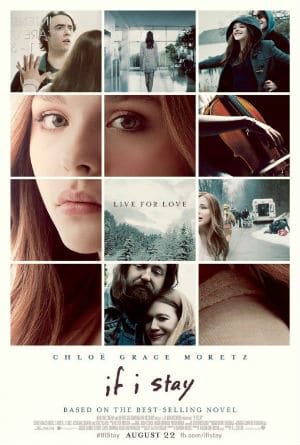
Just listen, Adam says with a voice that sounds like shrapnel.
I open my eyes wide now.
I sit up as much as I can.
And I listen.
Stay, he says.
Choices. Seventeen-year-old Mia is faced with some tough ones: Stay true to her first love—music—even if it means losing her boyfriend and leaving her family and friends behind?
Then one February morning Mia goes for a drive with her family, and in an instant, everything changes. Suddenly, all the choices are gone, except one. And it’s the only one that matters.
If I Stay is a heartachingly beautiful book about the power of love, the true meaning of family, and the choices we all make.
Rotten Tomatoes says of the film, “Although Chloë Grace Moretz gives it her all and the story adds an intriguing supernatural twist to its melodramatic young adult framework, If I Stay is ultimately more manipulative than moving.” (This is an excellent example of ‘melodramaic’ used as an insult.
Movie review websites aren’t kind to films and TV series made for and by women. I’ve also noticed that the word ‘manipulative’ is a gendered concept, far more likely to be applied to both women and media aimed at women. (I’m sure Joanna Russ would have something to say about this.) I would call this story a ‘tearjerker’ — it is what it is, and many readers enjoy reading stories like these for the cathartic power of sobbing, I think. Which is just as valid a reason to read/watch a movie as the chance to be ‘thrilled’ or ‘scared’ (emotions more robustly embraced by men).
Although the film follows the book quite closely, I’m writing here about the book.
GENRE BLEND OF “IF I STAY” BY GAYLE FOREMAN
At the beginning of the book, 17-year-old Mia already has a boyfriend of six months and is therefore not entirely new to relationships. In a straight romance the partners meet in the first few pages, something keeps them apart for the length of a book and then they get together at the end. At one point Mia narrates that her romance with Adam is a lot more complicated than that which means that, despite the romantic subplot, this isn’t a straight-up romance. More properly this is a love story.
Nicholas Sparks might even call it a love tragedy, if he’d written it.
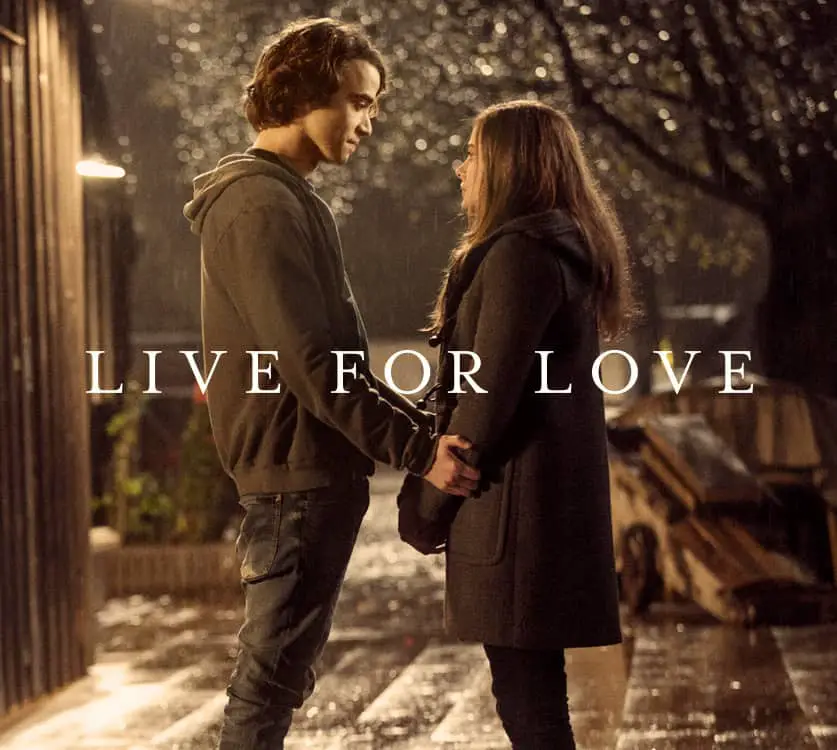
The out-of-body half-dead narration makes it supernatural, though some may read it as religious. This is not a religious story so much as a spiritual one, borrowing the state of limbo from earlier Catholic teachings, in much the same way as the horror genre also loves Catholic symbolism.
Mia states at one stage that if there’s a God he hasn’t shown up. Readers are therefore free to imbue the story with their own philosophies (though atheist nihilists aren’t well catered for in popular American young adult literature).
Mia’s character arc of finding out which parts of herself are essentially ‘her’ make it a coming-of-age drama.
SETTING OF “IF I STAY”
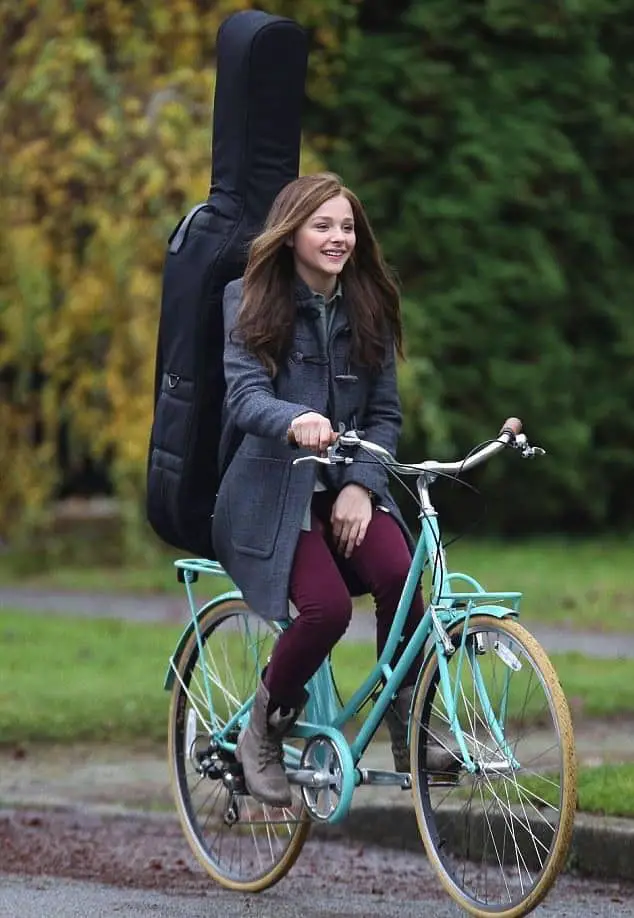
Mia’s family is the sort of cool, rocker family who tend to get sent up in Portlandia (although this family lives elsewhere in Oregon). The father doesn’t even get a driver’s licence until the mother makes him get one, so I imagine he’s a bit like the guy in this Portlandia send-up of hipster cyclists.
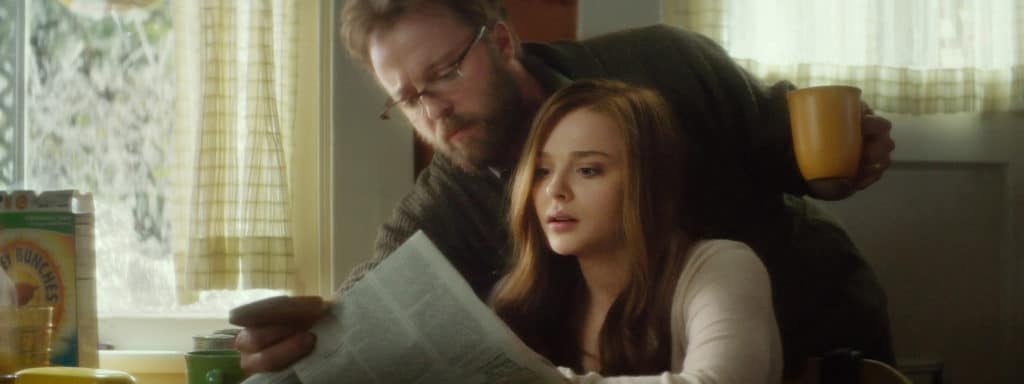
The nice thing about setting a story in Oregon is that a writer can make full symbolic use of the distinctly four seasons. If I Stay opens in the season of winter. This is significant to the plot (the car presumably skids on black ice or something) but is also highly metaphorical — this is the darkest hour of Mia’s life so far. When she looks back on her earlier recent past we’ll be taken with her back to happier times in warmer seasons. “It was warmer then”, we are told, when she went on that first date to see Yo Yo Ma with Adam.
As with many American stories, there is the whole Glamorization of New York thing going on. New York is the only place where things can happen. The not-so-subtle assumption here is that even if you make it back to your hometown, you haven’t really made it til you’ve been to New York.
STORY STRUCTURE OF IF I STAY
Here’s a very typical sequence in a young adult romance. Summarising from Roberta Seelinger Trites:
- Two teenagers feel sexually attracted to one another
- Something will keep them apart. During this period, each character thinks the attraction is unrequited.
- They’ll eventually share their feelings with each other and learn that it’s mutual.
- However, they don’t immediately get into it. They will agonise about what happens next, scared and worried about sex.
- They do end up expressing their passion with some sort of sexual contact.
- Maybe one character or the other regrets the action, because there are unwanted consequences. This might be pregnancy, family/peer group repercussions, or one character might betray the other.
- The two characters may end up together at the end of the novel, or they may break up.
There are two threads to this story and this is what makes it an interesting case study. I will call it an ‘alternating plot’. For more on plot shapes in children’s literature see here.
- The present — on a snow day the family take a drive and everyone but Mia is killed. Mia narrates as an out-of-body ghost following her sick body around as she is helicoptered to the hospital, then suffers through a succession of visitors.
- Flashbacks — how she started dating Adam, how her parents met, how she always feels like the odd one out, family history
Each of these two threads has its own fully-developed story arc. The Setting, Mia’s Shortcoming/Need and the New Situation are common to both of them.
SHORTCOMING
Mia has this nagging feeling occasionally that she was swapped in the hospital — not helped by her father’s jokes — exacerbated by the fact that Mia is into classical music while her family are punk rockers from wayback. This difference is expressed in her physical appearance: Mia is dark haired and dark-eyed while her parents and younger brother are blonde.
Mia is trying to work out who she is, which is probably the need of every single young adult protagonist. Here, more specifically, she wonders if she should even continue playing the cello which she has been obsessed with for a decade.
Mia needs to ‘find her tribe’, basically, which is ironically more difficult for a nerdy type kid who is born into a ‘cool’ family, and for an introverted girl who happens to find a boyfriend with friends so different from herself.
1. THE PRESENT THREAD
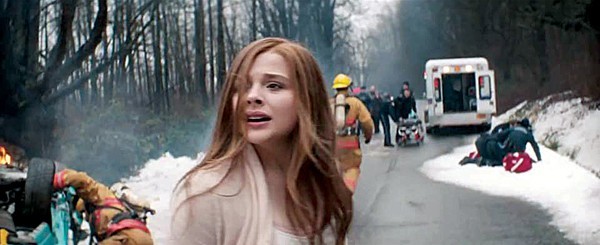
DESIRE
The author sets up a mystery for this thread — Mia knows that her parents have been killed, but where is Teddy? Mia desperately wants to know this information but because she is a ghost she has no ability to ask.
She desperately wants to see her boyfriend Adam. Although she is visited by a succession of relatives, none of these people manage to persuade her to live rather than die.
OPPONENT
The staff at the hospital are set up as opponents, from the grey-haired nurse to the doctor who roughly opens her eyelids to the guards. Willow is the only ‘goodie’ here.
The problem Mia has is one teenagers will relate to; although Mia’s relationship with Adam is as significant as that of an old married couple, Adam is not allowed in to see her because he’s not family.
I’m not sure if Adam would really be banned from seeing Mia in a real life equivalent situation*. Also, since this book was published there have been a few modifications made to hospital visitation rights, perhaps spearheaded by the gay community, though I’m not sure if anything has changed in regards to teenagers and their significant others.
*However, this book is not for fans of strict literary mimesis. It bothers me that the father’s brain on the road looks like a ‘grey cauliflower’. The flesh of fresh brains is pink, not grey. It’s not Seinfeld who wears the puffy jacket — it’s George.
PLAN
With Mia unable to formulate a plan in her non-body, it’s up to the best friends to somehow make it past the curmudgeonly hospital staff to see Mia. Mia watches as they stage an elaborate decoy plan.
BIG STRUGGLE
There is a lot of running around the hospital, evading guards and what not, and eventually the teenagers make it to Mia’s bedside.
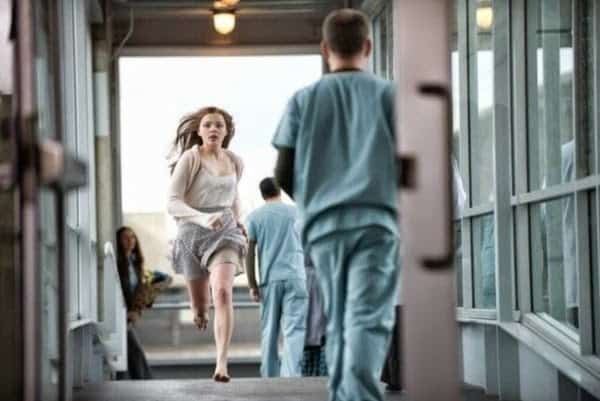
It’s been said that every movie (adaptation) could be called ‘Trapped’. This is because all popular stories seem to have a sequence in which the main character sees no way out. Mia’s trapped scene happens after she realises Teddy is dead.
I race through the hospital like a trapped wild animal. Teddy? I call. Where are you? Come back to me!
But he won’t. I know it’s fruitless. I give up and drag myself back to my ICU. I want to break the double doors. I want to smash the nurses’ station. I want it all to go away. I want to go away. I don’t want to be here.
This is an outward scene of the turmoil going on inside Mia’s head. (The author very sensibly wrote the book with some big scenes, making it good to go as a movie adaptation.)
I’m not sure this is a world I belong in anymore. I’m not sure that I want to wake up.
ANAGNORISIS
I realise now that dying is easy. Living is hard.
With Adam finally by her side in the hospital, Mia chooses life over death, even though her future will be vastly more uncertain than it was before.
The reveal is also that Adam has actually broken up with Mia right before the accident because she couldn’t promise to spend New Year’s with him.
2. THE FLASHBACKS THREAD
DESIRE
Mia wants to get into Julliard after other people sort of suggest to her that it might be a possibility. This isn’t a girl with a burning desire, but a girl who wants to please other people. Although the desire to get into Julliard is more burning than initially revealed, Mia is beginning to establish a nice adult life in Oregon and has a boyfriend based in Oregon. Mia’s desires are conflicting. The parents — cool as they are — serve as a vision of her future she does not want. She wants a life built around music, not the other way around.
Some writers would refer to the Julliard thing as the ‘outer desire’.
Mia’s ‘inner desire’ is to not be lonely. In both threads, Mia is consistently alone. She is alone in her family, alone here on stage during her audition, and if she gets in, she’ll be totally alone in New York, with the rest of her family hailing from Minnesota, the author makes sure to tell us.
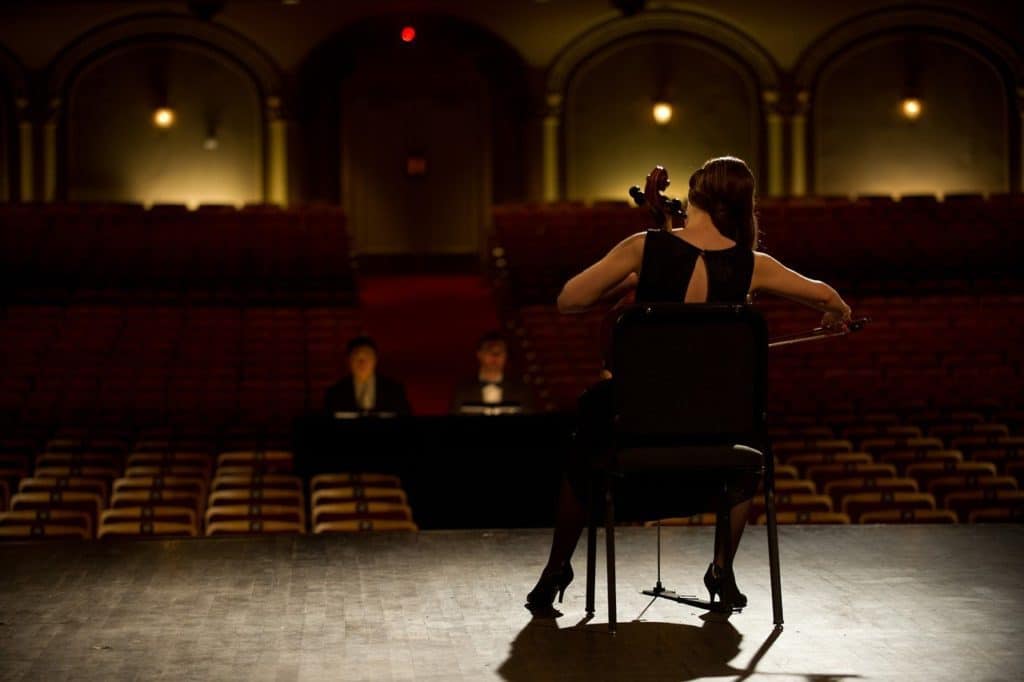
OPPONENT
A lot of young adult books feature parents as caring opponent figures but this book shuns that trope altogether with the cool, understanding parents.
Appropriately named Adam is Mia’s first boyfriend, and with this guy Mia must learn how to negotiate and communicate in a relationship. There are plenty of opportunities for disagreements along the way — there’s the cool rock chick he plays with (ultimately revealed to be lesbian in the film adaptation and therefore no threat at all), there’s a Pride and Prejudice sort of beginning in which Adam mistakes Mia’s attitude towards his gigs for lack of interest in him.
We also have an ally and sometime opponent in Mia’s best friend, the one she had a fisticuffs with back when they were eleven. Now they’ll fight to the death for each other. This history means the bffs have an honest, open communication line going between them — in contrast to the shutdown between Mia and Adam — and Kim also fills the role of challenging Mia when she considers giving up the cello. You can’t give up the cello, Kim advises, because she can’t possibly imagine Mia without a cello ‘between her legs’. In other words, Kim points out what the reader has already realised — that Mia’s road to happiness must, at all costs, include the cello.
PLAN
Mia will go through the Julliard application process and avoid making any big decisions until — and only if — she gets in.
She will also spend the year working out who she is, and this at one point involves a makeover scene. In a Betty/Veronica scene readers will instantly recognise, Mia realises she is not the fun blonde chick.
Mia gets into Julliard, as must happen to make a successful story. The reader knows this will happen but it’s not a problem, because the real question we want to know is: Will she choose her boyfriend over New York? (And also, did her little brother die?)

BIG STRUGGLE
The big big struggle scene of this thread is the argument with Adam, who feels Mia has lied to him, mainly by omission, not letting him in on her thoughts as she goes through the process of Julliard acceptance.
There’s a bit of a feminist message to young readers in this big struggle: Hopefully readers will notice the double standard that’s going on here — Adam expects Mia to do a lot of waiting around for him, busy with his performing and band practice, but he doesn’t want to do any waiting for his girlfriend, while she’s away pursuing her own musical dream. That said, the breaking up big struggle takes place off the page. Instead we have a very-much ameliorated boyfriend situation, with a guy who realises the double standard and concedes rather than — more realistically, in my opinion — a girl who works out the double standard for herself and points it out to him.
ANAGNORISIS
The message for both Mia and to young readers: Even if he’s got a lop-sided smile, live your own life before settling down. Otherwise you’ll end up like Mia’s mother — happy in her own way, but suppressing her own creative dreams for the sake of family, stuck in safe suburbia, (symbolically dying first because you’re a bit of a martyr).
NEW SITUATION
This book has a bittersweet ending characteristic of the Third Golden Age. Although she’s alive, Mia has lost her entire family and will need a lot of physical therapy. (Fortunately there is a sequel. We get to see how Mia does in her recovery.)
This book is, at its heart, a celebration of life over death. (All themes sound cheesey when you put them in a single sentence.) But what will the Fourth Golden Age of Children’s Literature bring us? An evolution on this type of story would surely be the glorification of death over life? Or perhaps there will be a backlash all the way back to full, Enid Blyton-esque health.
Finally, what is all this life and death stuff all about? What’s the main message here? Surely, surely, it’s about more than the opportunity to have a good wallow for a while, contemplating our own mortality.
RESONANCE
Ultimately, there may be a strong feminist message in If I Stay, and that’s where this story is nothing like the Twilight series. For Mia, ‘life’ = ‘her own life’. On the flip side we have ‘settling down in Oregon with a band boyfriend’ (who will probably end up ditching his musical dreams by the time he hits his 30s), which for her is a kind of ‘death’.
